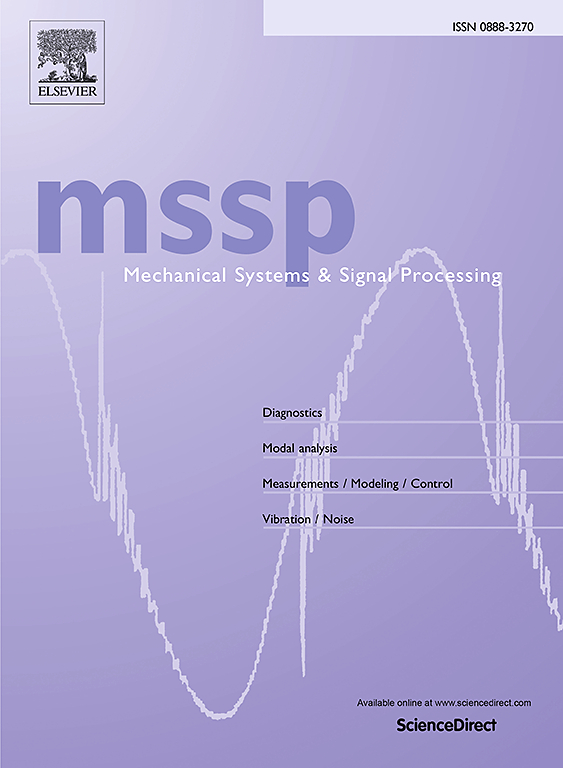System identification of nonlinear structures through a parametrically varying transfer function approach
IF 7.9
1区 工程技术
Q1 ENGINEERING, MECHANICAL
引用次数: 0
Abstract
The current work presents a methodology for the identification of weakly nonlinear structures using a quasi-linearized description. Quasi-linearization, in this context, refers to the fact that it is possible to approximate weakly nonlinear systems as linear systems parameterized by some measure of their response amplitude. The paper formalizes this by describing the forced response by an amplitude-dependent transfer function written in a rational fraction polynomial form. The coefficients are estimated through a regularized iterative identification approach based on frequency-domain measurements. An regularization is used to promote sparsity/model simplicity, and a bi-objective optimization approach is developed for its tuning. Apart from serving to obtain an accuracy-sparsity trade-off, this procedure allows for a minimal realization of the transfer function that is also physically meaningful. Following analytical explorations on a Duffing oscillator, the developed framework is applied to three experimental benchmarks, encompassing geometrically nonlinear, frictional, and multi-physics interactions. The performance of the method is assessed in its ability to describe the fixed displacement forced response surfaces. Furthermore, the identified models are used to synthesize fixed excitation forced response and compared against measurements to obtain additional insights.
求助全文
约1分钟内获得全文
求助全文
来源期刊

Mechanical Systems and Signal Processing
工程技术-工程:机械
CiteScore
14.80
自引率
13.10%
发文量
1183
审稿时长
5.4 months
期刊介绍:
Journal Name: Mechanical Systems and Signal Processing (MSSP)
Interdisciplinary Focus:
Mechanical, Aerospace, and Civil Engineering
Purpose:Reporting scientific advancements of the highest quality
Arising from new techniques in sensing, instrumentation, signal processing, modelling, and control of dynamic systems
 求助内容:
求助内容: 应助结果提醒方式:
应助结果提醒方式:


